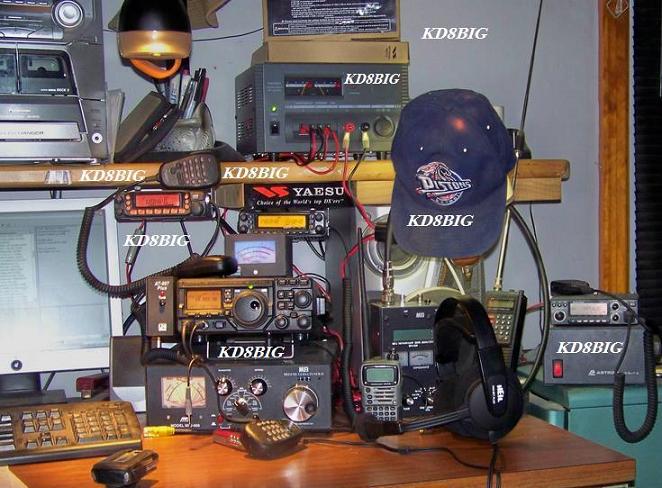Monday, September 2, 2013
QScope.org : Free online statistics and charts application for logs
http://www.qscope.org/
QScope.org is an online application that provides statistics and charts from HAM Radio logs.
Registration and access to the website are free.
While some features are designed with contesting in mind, most of the statistics will be useful for DXers and DXpeditions.
You just import your ADIF 2 or Cabrillo logs into QScope database and then browse the statistic and charts pages. The application allows for exporting your results in PDF and to share the web links to the charts you produced with your friends.
QScope permit you to create as many containers as you want and import as many logs as you need into them, so you can classified or aggregate the data the way you want.
QScope offers informations like* :
- Number of QSOs, Operating Time
- Unique callsigns worked, unique DXCCs entities, CQ and ITU Zones
- Average and Maximum QSO Rates over periods of 10, 30 and 60 minutes
- Activity Map showing which band, mode, operating position was more productive during a contest
- Charts with number of QSOs per unique callsign, band, mode or operator
- Charts with number of Points per unique callsign, band, mode or operator
- Charts with number of QSOs per CQ and ITU Zones
- Charts showing hour by hour, the Number of QSOs and Points, Number of new CQ and new ITU Zones worked, Number of new DXCC entities and new Prefixes worked
- Charts with Operating Time per band, mode or operator with parameter for pause duration
- Charts showing minute by minute how much was your QSO Rate for your whole log, per operator or per band, with parameter for the sample duration from 5 minutes to 60 minutes
- Charts with Maximum QSO Rates per band, mode or operator with parameter for the sample duration from 5 minutes to 60 minutes
* Note that the informations you can display depend on the data available in your logfile. ADIF logs containing more details than Cabrillo.
The beauty of a web application (have I said cloud computing?) is that more features and statistics can be easily added on the go and will benefit all users without need to download and install any new software. Of course improvements suggestions are welcome.
73,
Yan - XV4Y.
---
Yannick DEVOS - XV4Y
http://xv4y.radioclub.asia/
HOW TO READ PROPAGATION NUMBERS
The A index [ LOW is GOOD ]
- 1 to 6 is BEST
- 7 to 9 is OK
- 11 or more is BAD
Represents the overall geomagnetic condition of the ionosphere ("Ap" if averaged from the Kp-Index) (an average of the eight 3-hour K-Indices) ('A' referring to amplitude) over a given 24 hour period, ranging (linearly) typically from 1-100 but theoretically up to 400.
A lower A-Index generally suggests better propagation on the 10, 12, 15, 17, & 20 Meter Bands; a low & steady Ap-Index generally suggest good propagation on the 30, 40, 60, 80, & 160 Meter Bands.
SFI index [ HIGH is GOOD ]
- 70 NOT GOOD
- 80 GOOD
- 90 BETTER
- 100+ BEST
The measure of total radio emissions from the sun at 10.7cm (2800 MHz), on a scale of 60 (no sunspots) to 300, generally corresponding to the sunspot level, but being too low in energy to cause ionization, not related to the ionization level of the Ionosphere.
Higher Solar Flux generally suggests better propagation on the 10, 12, 15, 17, & 20 Meter Bands; Solar Flux rarely affects the 30, 40, 60, 80, & 160 Meter Bands.
K index [ LOW is GOOD ]
- 0 or 1 is BEST
- 2 is OK
- 3 or more is BAD
- 5 is VERY VERY BAD
The overall geomagnetic condition of the ionosphere ("Kp" if averaged over the planet) over the past 3 hours, measured by 13 magnetometers between 46 & 63 degrees of latitude, and ranging quasi-logarithmically from 0-9. Designed to detect solar particle radiation by its magnetic effect. A higher K-index generally means worse HF conditions.
A lower K-Index generally suggests better propagation on the 10, 12, 15, 17, & 20 Meter Bands; a low & steady Kp-Index generally suggest good propagation on the 30, 40, 60, 80, & 160 Meter Bands.
Terms of Service
I am not responsible for any thing that happens to your mental health, computer and all personal property because you visited my site.
This site is a collection of some things sent to me by e-mail, obtained from other blogs and the internet. If there is a picture or quote that is copyrighted to you let me know and I will remove your item .
Thoughts expressed in my blog are just that . I give My Opinion on the many events, products and how too, reported by the media and other web-sites.
Do not use this blog site to obtain weather events or disasters information. What I post may not be correct. Always get information from the proper media, weather (NWS)(NOAA)
Pacific Tsunami Warning Center and USGS sites










